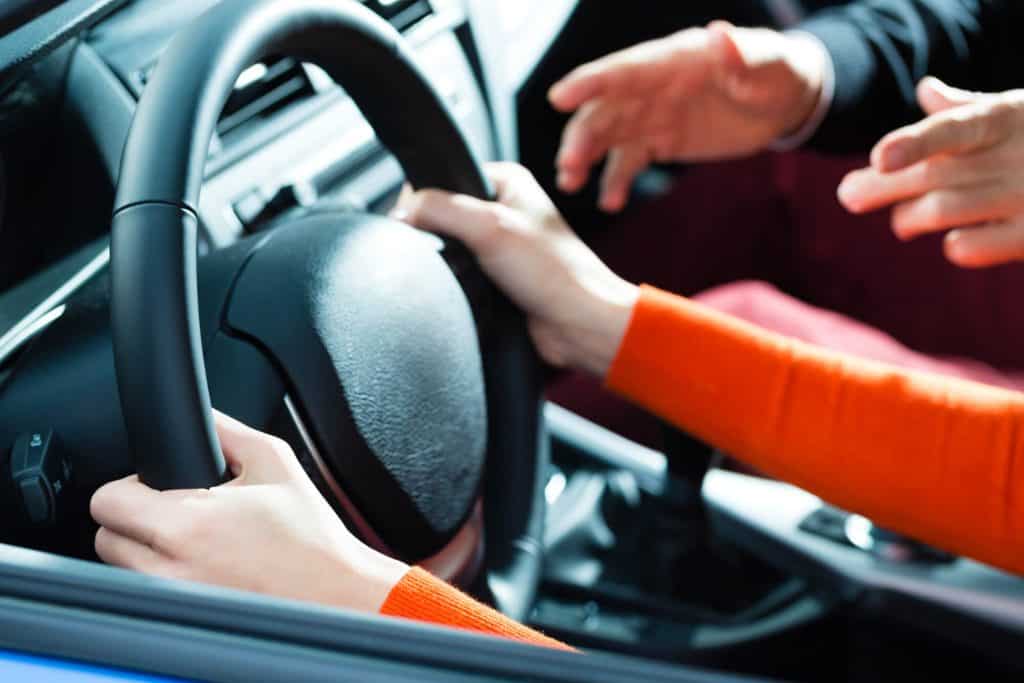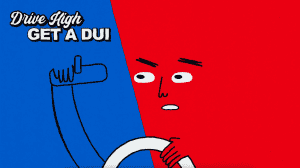National Teen Driver Safety Week is October 20th-26th and, as the kick-off date approaches, individuals, parents and communities around the country are working to raise awareness on how young drivers can stay safe on the roads.
Teenagers have less experience behind the wheel and are more prone to engage in impulsive behaviors, which is why it’s so vital to help them develop good habits and behaviors early on. While this is a topic that should be prioritized year-round, National Teen Driver Safety Week marks the occasion for communities to come together and open a dialogue on how to best provide young motorists the tools they need to become cautious, skilled drivers.
It’s important to address driver safety in general as well as the issues that affect teens more specifically. Because parents have such an important influence on their children, it makes a tremendous difference when they continue to actively engage with and guide their teenagers’ driving behaviors even after licenses have been obtained.
If you’re a parent who wants to help your teen be as safe and competent behind the wheel as possible, here are a few items to address:
Seatbelt Use Is Never Optional
In a previous study by Safe Kids Worldwide, 25% of teen drivers stated they didn’t wear seat belts and, when asked why, the majority stated they simply forgot.
It’s important to talk to your teenager about how important it is to wear a seatbelt. Some drivers assume that airbags render seatbelts unimportant, but both safety features work best in conjunction with each other.
Encourage your teen to always wear a seatbelt no matter where he/she is sitting in a vehicle, regardless of how far or close the destination.
Help your son or daughter remember by placing a sticky note or something noticeable (such as a sticker) on the steering wheel. This way, your teenager will have a visual reminder prompting him/her to buckle up before starting the ignition. This process will eventually become muscle memory, and your teen won’t need any sort of reminder to put his/her seatbelt on. Additionally, it’s important for the driver of a vehicle to always make sure all of the passengers are wearing their seatbelts as well.
Discuss How to Avoid Distractions Behind the Wheel
Distractions can be difficult for any driver to completely ignore, but avoiding them is one of the most effective ways of mitigating potential risks. Talk with your son or daughter about the importance of focusing on the road and how to minimize the temptation to give in to distractions. Common things like changing radio stations, engaging in personal grooming, and eating food in the car don’t seem like overly distracting actions, but they do require drivers to take their eyes off the road.
When it comes to cell phones, teenagers are especially glued to their screens. Try to convey why talking/texting or taking a selfie while operating a vehicle is never a good idea, and make it clear that your adolescent can only drive if he/she is willing to avoid cell phone use while driving. Most phones have the ability to program in an auto-reply text, which sends a message to the texter that they are focusing on the road but will get back as soon as they safely can.
Another big distraction for teens is peer passengers, as adolescents are often inclined to pay attention to their friends rather than the road. The more peer passengers in a vehicle generally means there is a higher probability the driver can be distracted. Enforce any graduated licensing laws put in place by your state, or consider establishing your own rules when it comes to when your son or daughter can drive with friends, how many friends can be in the car, etc.
Address Peer Pressure
Teenagers are at an age where peers have a big influence on their self-esteem. Because they are so sensitive to what others think about them, it’s easy for them to cave to peer pressure.
Talking to your son or daughter about the natural temptation to give into classmates’ requests, or suggestions while also providing tangible solutions on how to say no, can help start a healthy dialogue.
Teenagers often pressure the first person in their friend circle who has a drivers license to push the limits. They may suggest going for a faraway joy ride, driving at night while their curfew is still in place, allowing non-licensed drivers to take the car for a spin, or exceeding the speed limit.
While this isn’t uncommon adolescent behavior, it’s important that your teen feels comfortable and confident enough to avoid situations that could pose unnecessary risks. Here are a few suggestions on how to deal with peer pressure:
- Build up your teen’s confidence. Having high self-esteem is part of being a healthy person in general. For teens who are insecure and desperate to fit in, it’s often difficult to say no to people they want to impress. Work to build your teenager’s sense of self worth, and if he/she appears to be unnaturally insecure, consider seeking professional help.
- Tell your son or daughter it’s okay to blame you. If he/she doesn’t want to appear uncool to peers, communicate that it’s just fine to say that you’d be upset and take away the car keys. Having a scapegoat can take some of the social pressure off.
- Get to know your child’s friends. Regularly having your child’s friends over will help you connect with them as well as observe their behaviors and personalities. It also lets the friends get to know more about you as a parent, which can shed light on what your expectations are.
- Use a code word. If your teen is having trouble with peers, have a code that signals he/she needs help. Whether you need to provide a safe ride away from another risky driver or make a phone call pretending there’s a reason your son or daughter needs to drive immediately home, this lifeline can provide a reassuring safety net.
Talk Openly About Impaired Driving
During adolescence, peers often begin experimenting with drugs and alcohol. No parents like to think of their child ending up in circumstances where this is a possibility, but being able to openly communicate is essential in outlining the potential hazards as well as maintaining a line of trust.
Thoroughly discuss the risks of partaking in general, but also be sure to specifically emphasize why no one should drive under any circumstances while impaired or get into a vehicle where the driver is intoxicated.
Explain that, while you don’t condone your son or daughter becoming intoxicated, you will always provide a safe ride to him/her if the situation arises–no questions asked.
Emphasize the Importance of Getting Enough Sleep
Driving requires full attention to the road. The more alert drivers are, the more capable they are of paying attention to their surroundings and reacting appropriately. Drowsiness can dull this ability, which is why it’s important for your teenager to be able to differentiate between normal fatigue and extreme drowsiness.
Signs of being too tired to drive include:
- Yawning over and over
- Feeling eyelids become heavy
- Being unable to recall previously passed locations
- Missing exits or important turns
- Drifting from the center of the lane
If these signs occur, it’s important to pull over somewhere safe to either take a short rest or call for a ride.
Additionally, teenagers need around 8-10 hours of sleep to function the best, so try to encourage your teenager to get a good night’s sleep. Teens are often inclined to talk with friends or scroll through social media until the wee hours of the morning, leaving them groggy the next day. While you don’t have to enforce a strict bedtime, try to come to a reasonable agreement as to when screens will be put away and lights will be turned off.
Set a Good Example Behind the Wheel
One of the best ways to show your teenager how to be a safe and responsible driver is to be one yourself. By modeling conscientious habits, such as signaling with enough notice and allowing other drivers to merge, as well as remaining calm in the face of stressful situations rather than indulging in road rage, you’ll establish yourself as a positive driving role model.
It’s also important to do your best to refrain from bending the rules that many seasoned drivers occasionally do, such as failing to come to a complete stop at unpopulated stop signs or speeding when there are few cars on the road.
Continue to Drive with Your Teen
Just because your son or daughter has obtained a drivers license doesn’t mean he/she is no longer in need of any guidance.
Make time to go on drives or run errands with your teen at the wheel. By doing this, you can continually give feedback as well as observe if he/she has picked up any less-than-ideal habits since graduating drivers ed, such as speeding, running stop signs, texting at the wheel, etc.
Create a Driving Contract
A driving contract is an agreement between you and your son or daughter that clearly states what conditions must be met in order for him/her to be allowed to drive. While it’s up to you to establish what the consequences are for any violations, typical conditions to list include:
- Never driving impaired or getting into a car with someone who is intoxicated
- Following all graduated licensing laws
- Always wearing a seatbelt and making sure all passengers do as well
- Obeying curfews
- Avoiding distractions
If you already have a contract in place, use National Teen Driver Safety Week to reflect on whether it has been effective or if there are any modifications to make.
DriveSafe Driving Schools Is Committed to Teen Driver Safety
At DriveSafe, teen driver safety is something we are incredibly passionate about and focus on every day, and this commitment is deeply ingrained in our comprehensive curriculum.
DriveSafe’s mission goes far beyond helping our students obtain drivers licenses; we focus on developing habits and skills that give them the tools to drive safely for life. Our proven approach and dedication to our students’ success has made us the most trusted driving school in Colorado.










